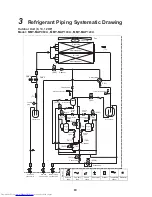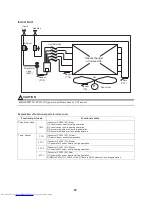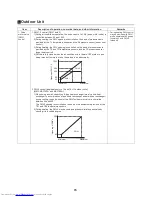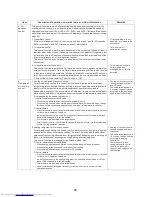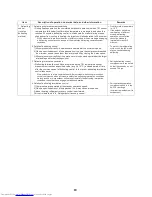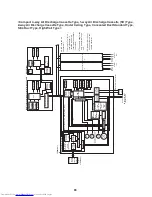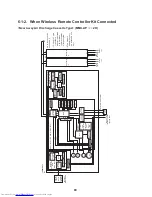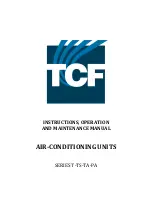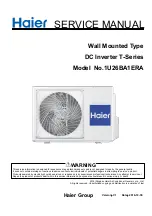
73
8
Cooling oil
(refrigerant)
recovery control
While the outdoor unit is recovering cooling oil (refrigerant), the indoor units perform
the following control tasks:
[common for operational (cooling thermo ON / thermo OFF / FAN), as well as non-
operational indoor units]
1) Open the indoor PMV to a certain degree.
2) Engage in recovery control for a specified period of time and return to normal
cooling operation at the end of this period upon terminating the control.
3) Operate the drain pump throughout the recovery control period and for about 1
minute after it.
• Recovery operation
normally takes place
roughly every 2 hours.
• The opening position
of the indoor PMV
depending on the type
and capacity of the
indoor unit.
9
Heating
refrigerant (oil)
recovery control
While the outdoor unit is recovering heating refrigerant (oil), the indoor units perform
the following control tasks:
1) Open the indoor PMV to a certain degree.
2) Control the indoor fan according to the operation mode.
[Indoor units operating in heating thermo ON/OFF state]
Let the indoor fan continue operating, but turn it off if the temperature of the indoor
heat exchanger drops.
[Indoor units operating in FAN mode]
Turn off the indoor fan and display “HEATING STANDBY
” on the remote
controller.
[Non-operational indoor units]
Keep the indoor fan turned off.
3) Terminate the recovery operation depending on the TC2 temperature reading.
The timing of termination is determined by each indoor unit.
4) Operate the indoor fan and drain pump for about 1 minute after the termination
of the recovery operation. (Applicable to 4-way air discharge cassette type, 2-
way air discharge cassette type and 1-way air discharge cassette type)
• Recovery operation
normally takes place
roughly every hour.
• The opening position
of the indoor PMV
depending on the type
and capacity of the
indoor unit.
10
Defrosting
control
While the outdoor unit is engaged in defrosting control, the indoor units perform the
following control tasks:
1) Open the indoor PMV to a certain degree.
2) Control the indoor fan according to the operation mode.
[Indoor units operating in heating thermo ON/OFF state]
Let the indoor fan continue operating for a while, but turn it off as the temperature
of the indoor heat exchanger drops.
[Indoor units operating in FAN mode]
Let the indoor fan continue operating.
[Non-operational indoor units]
Keep the indoor fan turned off.
3) As defrosting control comes to an end, it gives way to heating refrigerant (oil)
recovery control.
(For control details, see “9. Heating refrigerant (oil) recovery control” above.)
• For defrosting
commencement
conditions, see “
7.
Defrosting control
(reverse defrosting
method)” above.
• The opening position
of the indoor PMV
depending on the type
and capacity of the
indoor unit.
11
Short
intermittent
operation
compensation
control
1. For 5 minutes after startup, the system is forced to continue operating even if it
reaches the thermo OFF region.
2. However, priority is given to cooling/heating selection, operation standby, and
protective control, so that there is no overriding of thermo OFF in these cases.
12
Drain pump
control
1. During cooling (including DRY operation), the drain pump is operated at all times.
2. If the float switch is activated while the drain pump is in operation, the drain pump
continues operating, with the relevant check code displayed.
3. If the float switch is activated while the drain pump is turned off, thermo OFF is
forced on the air conditioner, with the drain pump put into operation. If the float
switch continues to be activated for about 5 minutes, the drain pump is turned off,
with the relevant check code displayed.
Check code [P10]
13
Elimination of
residual heat
1. When the air conditioner is turned off after engaging in heating operation, the
indoor fan is operated for about 30 seconds in “breeze” mode.
NO.
Item
Specification outline
Remarks


